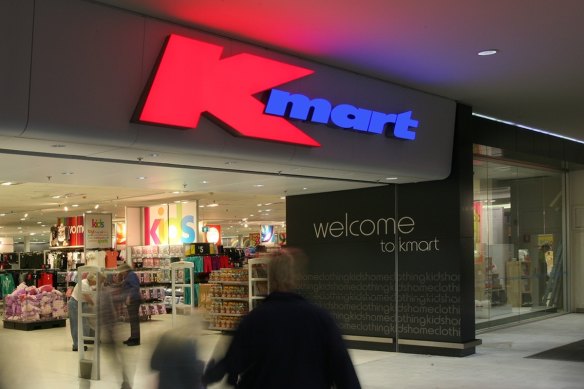Price is right at Kmart as shoppers flock for bargains
Shoppers have flocked to discount department stores Kmart and Target as cost of living pressures bite, with the brand’s owner Wesfarmers revealing revenues grew 24.1 per cent to $5.7 billion in the six months to December.
Wesfarmers reported a 14.1 per cent jump in first-half net profits on Wednesday morning to $1.4 billion, with boss Rob Scott saying the group’s stores, which include Officeworks, Bunnings and the Kmart Group, had booked strong performances over the past six months.

Total group revenues jumped 27 per cent to $22.5 billion.
“The retail businesses benefitted from their well-established value credentials and omnichannel offer as customer shopping behaviours began to normalise,” he said.
Kmart Group, which includes the company’s discount department store brands Kmart and Target, saw revenues hit $5.7 billion for the half and earnings grow by 114 per cent to $475 million.
Scott said shoppers had responded well to Kmart’s low price positioning during the half, while changes to Target’s product focus is also paying off.
“Target’s performance reflected continued improvements in the product offer, particularly in the focus categories of apparel and soft home. With more normal trading conditions during the half, the full benefits of the significant network change program undertaken across Kmart and Target were also able to be realised.”

The earnings figure for Kmart Group does not include online marketplace Catch Group, however, which posted a $108 million loss for the half and proved one of the few dark spots on the company’s balance sheet. Catch’s results were impacted by $33 million in restructuring costs including redundancies and asset write-offs as Wesfarmers works to reduce overhead costs.
DIY giant Bunnings also delivered $9.7 billion in revenue for the half, with earnings rising by 1.5 per cent to $1.3 billion.
“Sales growth was supported by strong growth from commercial customers and resilient consumer demand, despite prolonged wet weather on the east coast impacting spring trading,” Scott said.
Analysts will be eyeing Wesfarmers’ comments about the outlook for consumers closely on Wednesday amid concerns of a plunge in confidence because of continued interest rate rises.
In an outlook statement, the company acknowledged elevated rates and inflation were expected to “impact demand in parts of the Australian economy”, but that the group’s low-cost retail models would be well-placed to face this.
The company was also confident about current trading conditions. “Results through the first five weeks of the second half of the 2023 financial year have been broadly in line with growth reported for the first half,” the group said.
Wesfarmers will pay a fully franked interim dividend of 88 cents per share, up from 80 cents last year.
More to come
The Business Briefing newsletter delivers major stories, exclusive coverage and expert opinion. Sign up to get it every weekday morning.
Most Viewed in Business
Source: Thanks smh.com